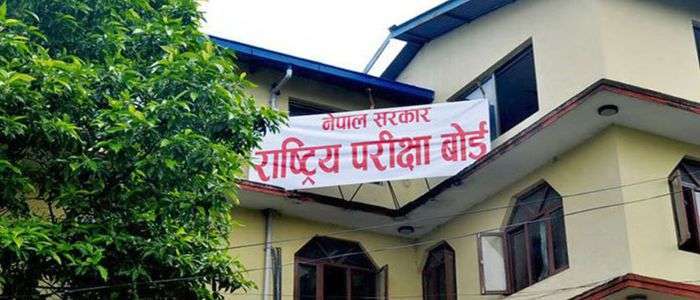Introduction to SEE in Nepal – What after SEE?
What After SEE is the most confused queries among the students. e Secondary Education Examination (SEE), previously known as the School Leaving Certificate (SLC), holds immense significance in Nepal’s educational system. Annually, around 500,000 students undertake this examination, marking a crucial milestone in their academic journey. With the transition to a grading system, SEE evaluates students on a 4.0 GPA scale, ushering in a new era of assessment.
Understanding the Post-SEE Phase
Transitioning Period
Following the culmination of their ten-year schooling journey and the arduous preparation for SEE, students enter a three-month hiatus post-examination. However, this phase often proves more perplexing than the examination itself, as students grapple with the daunting task of charting their future paths.
Dilemma and Confusion
The absence of adequate guidance and information exacerbates the dilemma faced by post-SEE students. Uncertain about their career trajectories and lacking clarity regarding available opportunities, students find themselves ensnared in a state of indecision.
Exploring Educational Pathways Post-SEE
+2 Science
- Scope and Perception: Considered prestigious, +2 Science attracts students and parents with promises of extensive career prospects. Despite common misconceptions, this stream offers a robust foundation in science and technology, paving the way for diverse career avenues.
- Core Subjects: Physics, Chemistry, Biology/Computer Science, Mathematics, English, Nepali, Social Studies.
+2 Management
- Dispelling Misconceptions: Contrary to popular belief, +2 Management isn’t a refuge for underperforming students. Rather, it equips students with essential managerial skills, fostering confidence and adaptability in dynamic business environments.
- Key Subjects: Accounting, Business Studies, Economics, English, Nepali, Social Studies.
+2 Humanities
- Versatile Stream: Often overshadowed, +2 Humanities offers a nuanced exploration of human culture, society, and values. Despite its underrated status, the stream provides a rich tapestry of subjects encompassing literature, sociology, and history.
- Core Subjects: Literature, Mass Communication or Journalism, Rural Economics, Population Studies, Sociology.
+2 Education
- Fostering Educational Insight: +2 Education delves into the fundamental principles of teaching methodology, laying the groundwork for aspiring educators. While often overlooked, education serves as the bedrock of societal development, making teaching a noble and indispensable profession.s
- Key Focus Areas: Educational Policy, Curriculum Design, Teaching Techniques.
GCE A Levels (Science and Non-Science)
- International Perspective: GCE A Levels offer students a global perspective on education, with diverse subject combinations tailored to individual interests. Despite being relatively expensive, A Levels provide exposure to international teaching methodologies and facilitate a seamless transition to foreign universities.
- Subject Flexibility: A wide array of subject combinations enables students to tailor their academic pursuits to align with their career aspirations.
CTEVT (Diploma and Certificate Level Programs)
- Practical Skill Acquisition: CTEVT diploma courses offer a pragmatic approach to education, equipping students with hands-on skills in various fields. With a plethora of faculties to choose from, students can embark on specialized vocational paths immediately post-SEE.
Conclusion
What after SEE in Nepal marks a transformative period in students’ lives, characterized by uncertainty and possibility. By dispelling myths and providing comprehensive insights into available educational pathways, we aim to empower students to make informed decisions about their academic and professional futures.
What after SEE ? Here are some of the frequently asked questions from the students.
1. How do I determine which stream is right for me? What after SEE?
- Assess your interests, strengths, and career aspirations to identify the most suitable stream.
2. Are there any scholarship opportunities available for post-SEE students?
- Yes, various organizations and institutions offer scholarships based on academic merit, financial need, and extracurricular achievements.
3. Can I switch streams after enrolling in a particular faculty? What after SEE ?
- While it’s possible to switch streams under certain circumstances, it’s advisable to carefully consider your choice before enrolling.
4. What are the career prospects for students pursuing +2 Humanities?
- Graduates of +2 Humanities can pursue careers in fields such as journalism, social work, education, and public administration.
5. How can I seek guidance and counseling during the post-SEE phase? What after SEE ?
- Schools, colleges, and educational institutions often have dedicated counseling centers to assist students in navigating their academic and career choices.
We hope you found the content “What after SEE” informative and helpful. If you have any questions or feedback, please leave a comment below. Your thoughts and opinions are important to us.
Additionally, if you enjoyed the information on our website, please like our Facebook page Routine of BCA and join our Facebook group
BCA Students of Nepal to stay up to date with our latest updates and connect with other like-minded individuals. Thank you for visiting our website and we look forward to your participation in our community.
Click to know more about BCA in Nepal




